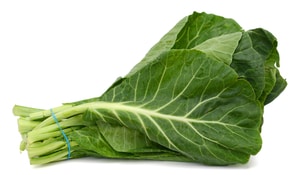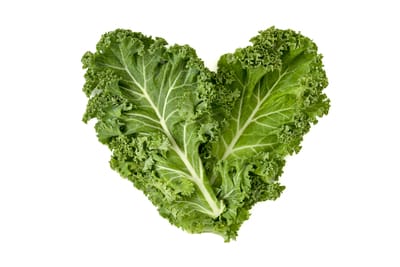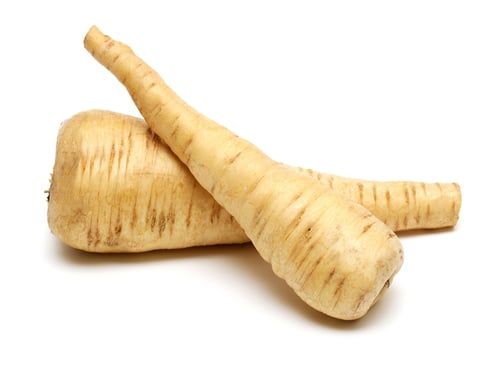Can guinea pigs eat collard greens?
The answer is yes, they can. Guinea pigs mostly rely on fruits and green vegetables.

Collard greens have been a main part of animal and human diets for a long time. Many in the world have used vegetables as food since time immemorial.
Both are filled with healthy nutrients that are benefits for the health of your guinea pig.
Your Guinea pigs will enjoy collard greens and fresh leafy vegetables like spinach, parsley, turnip greens, Lettuce, and kales.
Spinach is the best food and healthy food love my cavies to eat which is why I feed them It just 2 or 3 times a week.
As you know that guinea pigs are unable to create as well as store vitamin-C on their own. So, for producing vitamin-c, they need external source in the form of greens veggies. Check out my guide to have a better understanding of their likes/dislikes.
Most of the green vegetables are safe and fully packed with healthy nutrients which are benefits for your guinea pig.
Some vigorous benefits of Guinea pigs eating greens are:
- Reduce the chances of chronic diseases and guard against complications that lead to severe heart failure.
- It helps your guinea pigs in digestion because it contains dietary fiber that helps in proper digestion.
- Greens boost up the immune system of guinea pigs.
- It helps in reducing cholesterol levels of your pig.
If you want to guinea to lead a healthy and vigorous life, then you should feed them with enough greens.
Nutrition
This is the nutrition value related to Medicalnewstoday One cup of boiled collard greens, drained and without added salt, contains:
- 63 calories
- 5.15 g (g) of protein
- 1.37 g of fat
- 10.73 g of carbohydrate, including 7.6 g of fiber and less than 1 g of sugar
- 268 milligrams (mg) of calcium
- 2.15 mg of iron
- 40 mg of magnesium
- 61 mg of phosphorus
- 222 mg of potassium
- 28 mg of sodium
- 0.44 mg of zinc
- 34.6 mg of vitamin C
- 30 mcg of folate
- 722 micrograms (mcg) of vitamin A (RAE)
- 1.67 mg of vitamin E
- 772.5 mcg of vitamin K
Collard greens are an excellent source of vitamin A, vitamin C, and calcium, a rich source of vitamin K, and a good source of iron, vitamin B-6, and magnesium.
What leafy greens can Guinea pigs eat?

Greens and veggies are the main parts of your guinea pig’s diet. It is the best source of healthy micronutrients like minerals and vitamins. The major part of your guinea pig’s diet high-quality grass hay (70%), uniform food (20%) and greens and veggies (8%).
You can feed guinea pig butterhead lettuce and round lettuce because these are cheap as well as healthy. Fresh vegetables can be accessible once a day and it should be equivalent about one-cup total per cavies per day.
Some of the leafy greens that you should feed to your guinea pigs are spinach, parsley, romaine, lettuce, and kale. Add zucchini, sweet potatoes and carrots once and twice a week.
Nutrition facts of leafy greens:
If you have your guinea pig in your home, then leafy greens should be the best part of their diet. It is so because leafy greens are filled with various nutrients that are ready to help your cavies grow active and healthy. Some of the nutrition facts of leafy greens are:
Vitamin C:
Vitamin C is the major vitamin in the life of guinea pigs. It protects against scurvy. It also helps your guinea pigs to absorb iron.
Vitamin A:
The vitamin will boost the immune system to promote eye health and enhance vision.
Dietary fiber:
Dietary fiber is the nutrient that is available in leafy greens. It helps in the digestion system of your guinea pig.
Folate:
This is another important nutrient that is available in leafy greens. Folate helps guinea pig that creates red blood cells in their bodies.
Is Kale safe for guinea pigs?

If you are an owner of guinea pigs, then you may wonder about; Is Kale safe for piggies or not? Kale is a dark and leafy green vegetable.
It is the main part of the Brassica family and acts as a healthy superfood because it is full of minerals and vitamins like Vitamin C, Vitamin K, and Vitamin A.
Yes they can. Kale is a great source of fiber for guinea pigs that is very low in sugar and fat.
Buying suitable amounts of kale regularly for your guinea pig can help you in reducing vitamin loss. Kale is the easiest way to keep your cavies full of vitamin C.
These qualities can make kale a healthy choice for guinea pigs and people.
Can Guinea pigs eat kale daily?
Kale is full of vitamin C as well as fiber. Kale is low in sugar. This is an advantage of kale on other fruits and vegetables which are high in sugars i.e. oranges and carrots. Take care of guinea pig food to makes them healthy and strong.
If you give fresh, and handful washed kale to your guinea pig, then your cavies get a suitable amount of Vitamin C.
Kale is benefited for your guinea pigs, but it requires to be fed as the part of the balanced diet. The diet consists of kale regularly is not good for your guinea pig. It can lead to many health problems and nutrient imbalances.
Nutrition
A single cup of raw kale (about 67 grams or 2.4 ounces) contains:
- 206% of the DV (from beta-carotene) Vitamin A:
- Vitamin K: 684% of the DV
- 134% of the DV Vitamin C
- Vitamin B6: 9% of the DV
- Manganese: 26% of the DV
- Calcium: 9% of the DV
- Copper: 10% of the DV
- Potassium: 9% of the DV
- Magnesium: 6% of the DV
Can Guinea Pigs Eat Parsnips?

Yes, Guinea pigs can eat parsnip.
The general rule of thumb is that you should feed your guinea pig this veggie 2-times per week.
Many owners claimed that their cavies dislike parsnip because of its strong taste and aroma.
If your guinea pig dislikes parsnip, then mix it with other leafy greens like salad.
If guinea pig dislikes the taste of parsnip, then serve it with bell pepper, asparagus, kale, broccoli, and lettuce.
Health benefits of Parsnips to guinea pig
The vitamin-C present in parsnips will keep your guinea pig strong and healthy. It also safe your cavies from scurvy i.e. there will be no risk of bleedings, bad appetite, diarrhea, and rough coat.
If you feed your guinea pig parsnips, then the blood of your guinea pigs will be healthier, blood clotting will be easy and fast and less disposed to anemia. It is due to the presence of iron, vitamin K, pantothenic acid and copper in parsnips.
Nutrition
One cup (133 grams) of parsnips provide the following (Trusted Source):
- Calories: 100
- Carbs: 24 grams
- Fiber: 6.5 grams
- Protein: 1.5 grams
- Fat: 0.5 grams
- Vitamin C: 25% of the Reference Daily Intake (RDI)
- Vitamin K: 25% of the RDI
- 22% of the RDI of Folate
- Vitamin E: 13% of the RDI
- Magnesium: 10% of the RDI
- Thiamine: 10% of the RDI
- Phosphorus: 8% of the RDI
- Zinc: 7% of the RDI
- Vitamin B6: 7% of the RDI
Verdicts
So, it is important to vary your guinea pigs’ diet on a daily basis. Try to feed them some other leafy greens like romaine lettuce, carrot tops, and fruits. This strategy will help in preventing dangerous building-up of excess nutrients.
Conclusion
Before I let you go, last and final thought on food. Educate yourself about the healthy foods that your guinea pigs can eat. Avoid those foods which can make your cavies sick.
Ensure to include veggies, fruits, collard greens, leafy greens, and parsnips because it contains minerals and vitamins that help them stay healthy.
According to my opinion, collard greens are good for your guinea pigs. I also feed my cavies collard greens in a suitable amount.

Lydia King is a huge animal lover and has always been fascinated with learning about the animal kingdom. She enjoys writing about anything animal related from scientific information about rare species to animal references in pop culture.











